The Australian Bureau of Statistics (ABS) has released its Australian Demographic Statistics for the December quarter of 2018, which revealed that Australia’s population continues to grow manically led by surging net overseas migration (NOM), mostly into Sydney and Melbourne.
According to the ABS, Australia’s population rose by 1.6% in the 2018 calendar year, well above the 35-year average:
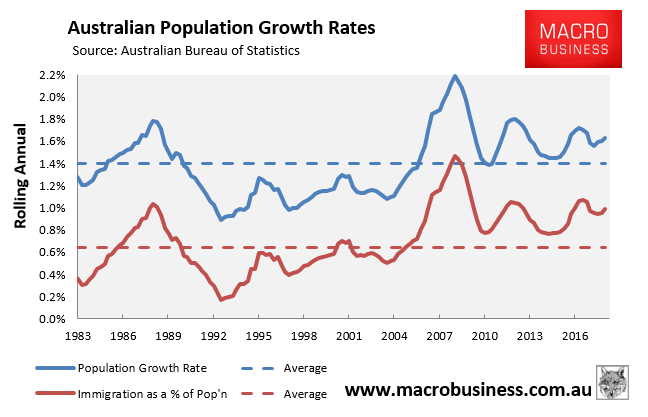
The growth in the number of persons in the 2018 calendar year was an insane 404,800, even further above the 35-year average:
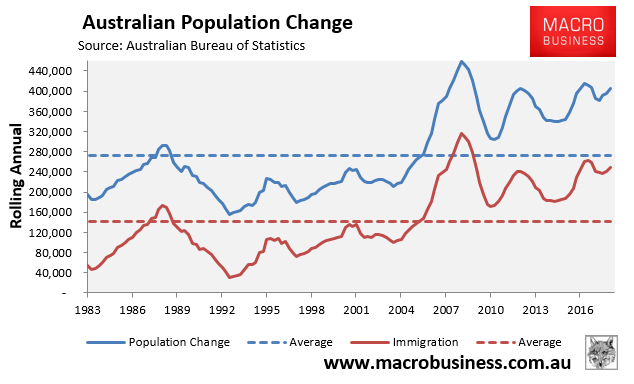
Australia’s population growth continues to be driven overwhelmingly by NOM – defined loosely as those residing in Australia for 12 months or more:
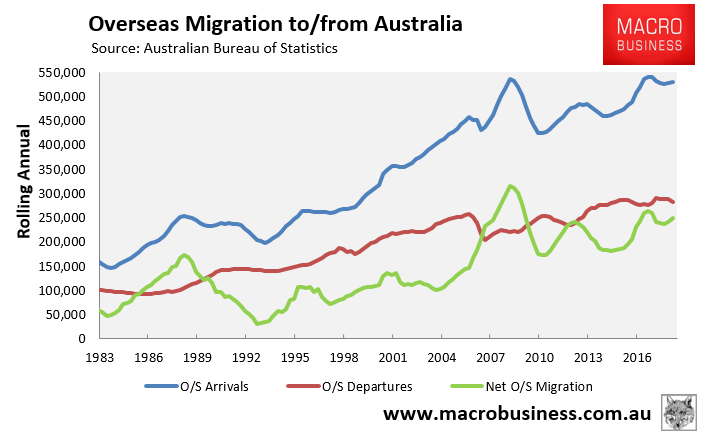
While NOM is still below the peak of 315,700 recorded in calendar year 2008, at 248,500 in the 2018 calendar year, it remains way above the 35-year average level of 141,766.
It is also more than 3-times the circa 75,000 average NOM since Federation:
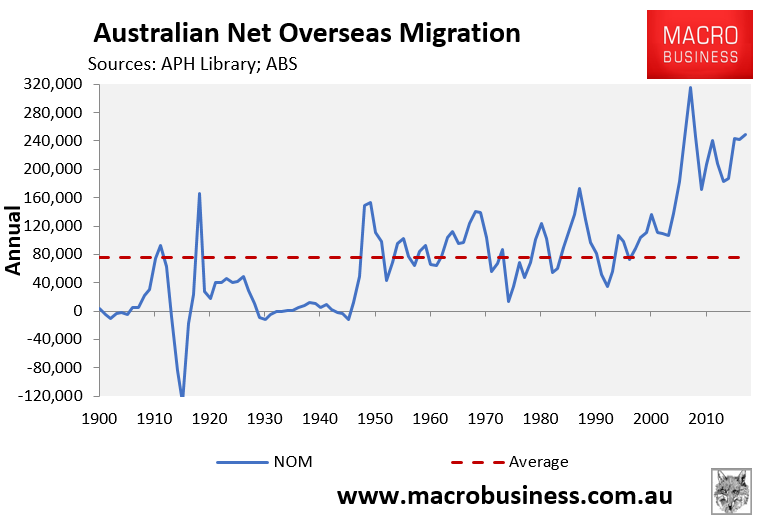
Moreover, as shown below, the proportion of population growth derived from NOM – 61.4% in the 2018 calendar year– remains well above the 35-year average of 49.3%:
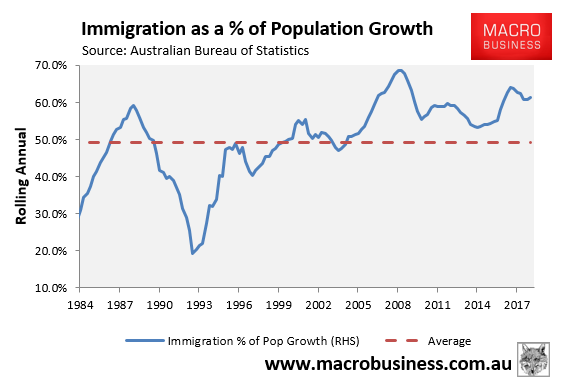
Victoria continues to be the population ponzi king, with its population growth at 2.18%. By contrast, population growth in South Australia and Western Australia was 0.8% and 0.9% respectively in the 2018 calendar year:
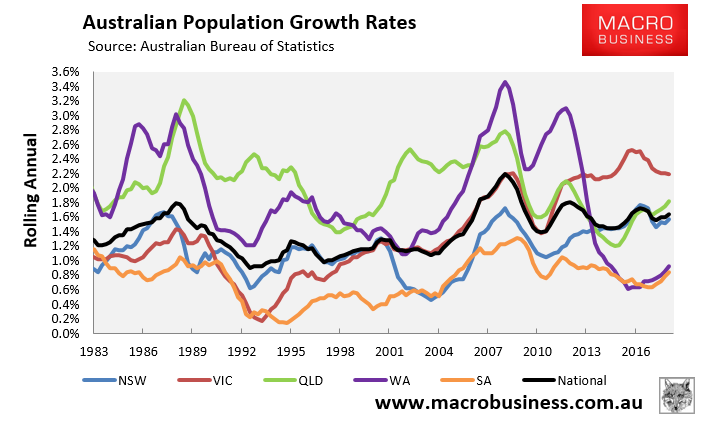
In pure number terms – which is what matters for infrastructure, housing and overall liveability – Victoria and New South Wales are way out in front in the population growth stakes. In the 2018 calendar year, Victoria added an insane 139,430 new residents, whereas New South Wales added 123,813 new residents:
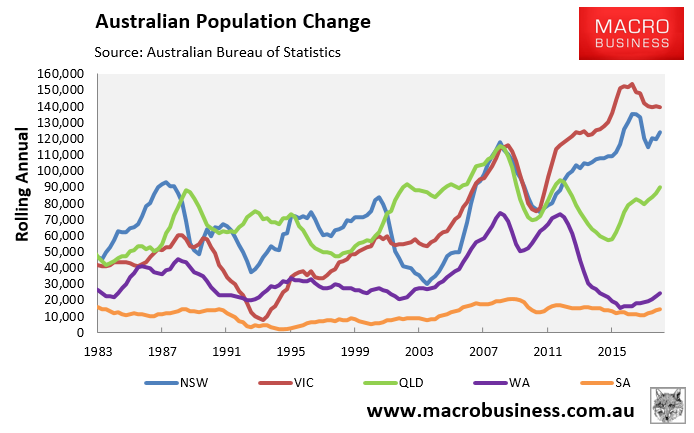
Immigration into New South Wales (read Sydney) and Victoria (read Melbourne) remained at insane levels of 91,999 and 85,965 respectively in the 2018 calendar year:
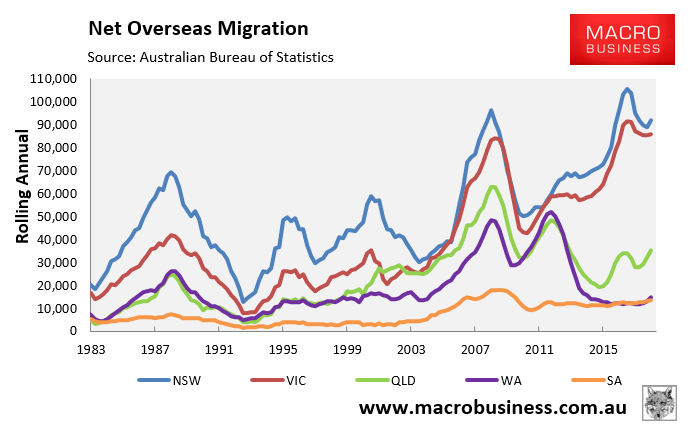
This is a disaster in the making. At this pace of growth, Australia will add one million people in just 2.5 years, with the lion’s share flooding into Sydney and Melbourne.
As a result, living standards are being unambiguously smashed. Housing is becoming smaller and is hideously expensive. Roads, public transport, schools and hospitals are crush-loaded. And overall economic and social infrastructure is groaning under the strain.

